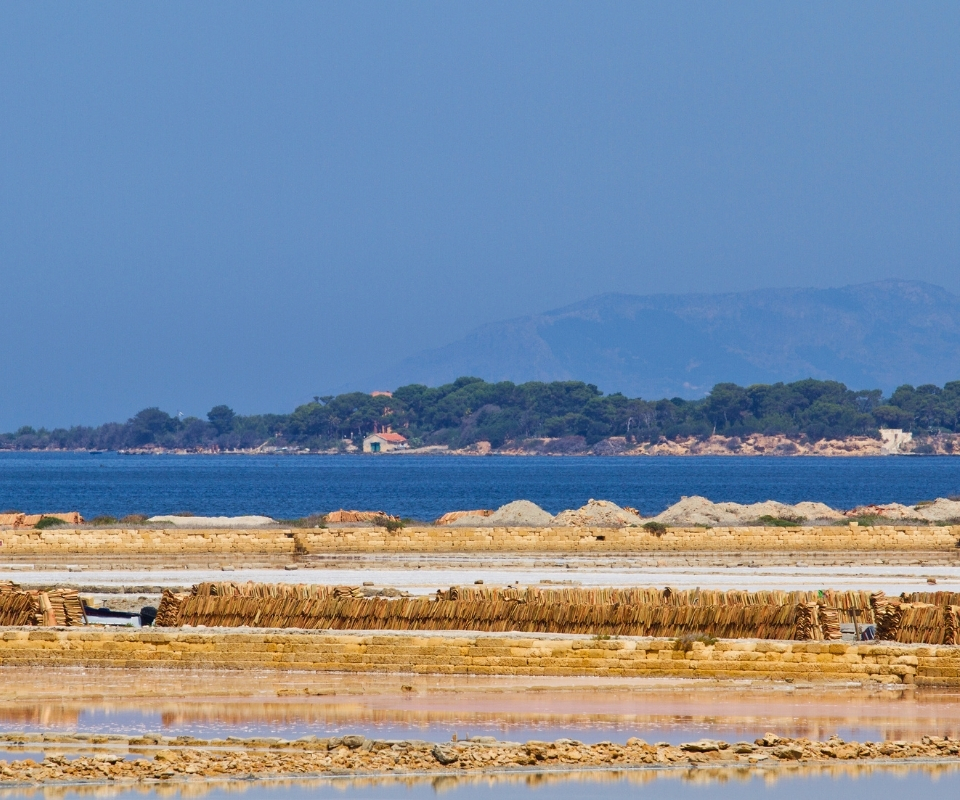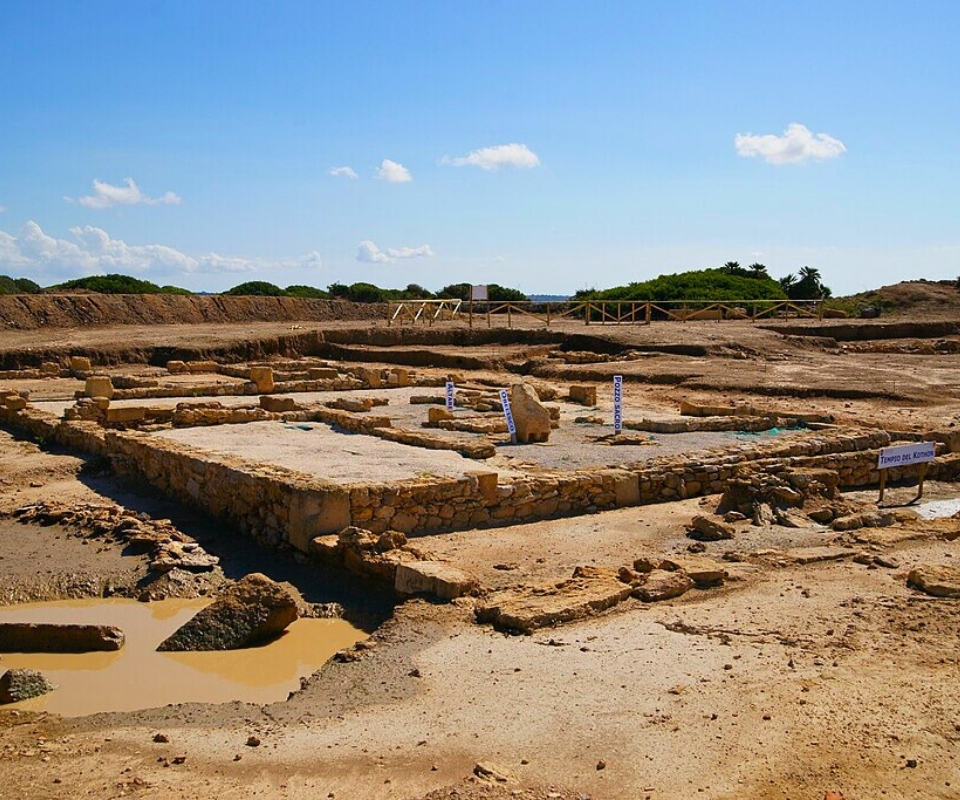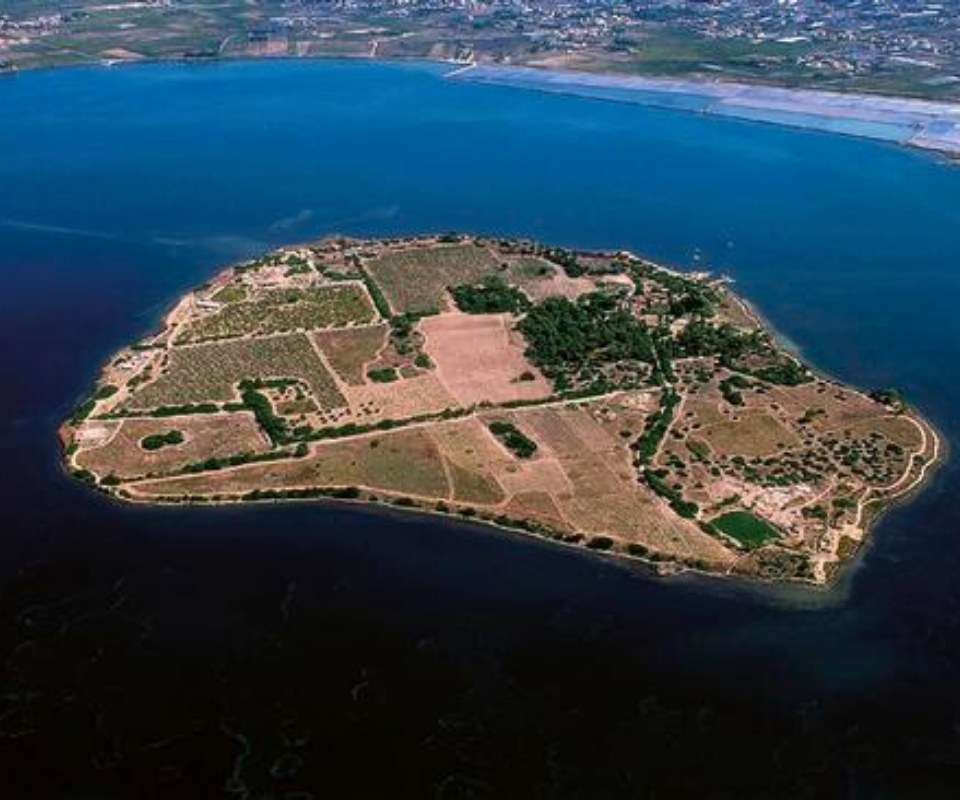In the middle of the Stagnone Lagoon, just a few hundred meters from the coast of Marsala, lies the island of Mozia, also known as San Pantaleo: a true archaeological treasure that allows visitors to travel back in time to the Phoenician era. Mozia was founded by the Phoenicians at the end of the VIII century a.C. as a commercial emporium and Punic outpost in Sicily. Thanks to its strategic position at the center of the lagoon, the island was easily defensible and soon became one of the most prosperous Phoenician colonies in the ancient Mediterranean. For over three centuries, Mozia, known as Motya in classical sources, was a flourishing commercial hub, connected with Carthage and other Phoenician settlements along the coast. Its fortune came to an abrupt end in 397 a.C. , when Dionysius I of Syracuse attacked and destroyed it after a violent siege, during the wars between the Greeks and Carthaginians for control of Sicily. The island was set on fire and abandoned, remaining wrapped in silence for centuries: according to legend, the surviving inhabitants fled, carrying with them whatever they could, while the ruins of Mozia were gradually swallowed by time and vegetation.
The true rediscovery of Mozia took place at the beginning of the twentieth century, thanks to Joseph Whitaker, a wealthy English archaeologist and enthusiast who purchased the island and conducted systematic excavations. The Whitaker excavations brought to light the wonders of Mozia: sections of the ancient defensive stone walls, the tofet—an open-air sanctuary with votive stelae and urns linked to Punic rituals—remains of houses and workshops, the mosaic floor of a large dwelling known as the House of Mosaics, and even a kothon, an artificial basin likely used as an internal harbor or water reservoir. Of exceptional importance was the discovery, in nineteen seventy-nine, of a marble statue known as the Youth of Mozia: a Greek sculpture from the fifth century before Christ, depicting a young man in a finely pleated tunic, of astonishing beauty and with an enigmatic smile, probably brought to Mozia by merchants or taken as war booty. This statue, together with thousands of smaller artifacts—including ceramics, jewelry, weapons, and everyday tools—is now displayed in the Whitaker Museum, housed in the historic family villa on the island.
The museum is divided into two sections: the old wing, dedicated to Joseph Whitaker himself, preserves the artifacts discovered during his pioneering excavations, while the new wing, named after archaeologist Antonina Ciasca, gathers materials from more recent digs. In addition to the Youth of Mozia, visitors can admire engraved Phoenician stelae, votive masks, amphorae, and artisan objects that testify to the connections between Mozia and contemporary cultures, including Greek and Etruscan influences.
Visiting the island of Mozia is a fascinating experience from many perspectives. It can be reached via a short boat ride from the coast, departing from the piers at Contrada Spagnola or Salinella, crossing the calm waters of the lagoon dotted with windmills and piles of harvested salt. Upon arrival, visitors immediately find themselves immersed in the island’s unspoiled natural setting: a small landmass of just forty hectares, covered with Mediterranean scrub, vineyards, and wild plants, while the shallow waters of the Stagnone Lagoon glisten under the sun.
A circular path allows exploration of the main archaeological sites: visitors can admire the imposing bastions of the North Gate, one of the island’s ancient city gates, the remains of paved streets and drainage canals, and the visible section of an extraordinary submerged road that once connected the island to the mainland, still observable just beneath the water’s surface. The atmosphere is truly timeless: walking among the ruins, surrounded only by the sound of cicadas and the whisper of the wind, gives a glimpse into what life must have been like in this prosperous Phoenician colony, suddenly wiped out.
On the western side of the island, near the fortifications, the view extends across the lagoon, offering unforgettable scenery at sunset, as the sky’s colors are reflected in the salt flats. Mozia is a place that perfectly blends history, archaeology, and nature: it is both an open-air museum of the ancient Phoenician-Punic civilization and a tranquil oasis where time seems to stand still. It is no surprise that institutions like the Italian Environmental Fund (FAI) promote the protection of this precious island, a must-visit destination for history lovers and those who appreciate breathtaking landscapes.
360° Virtual Tour
How to get there






